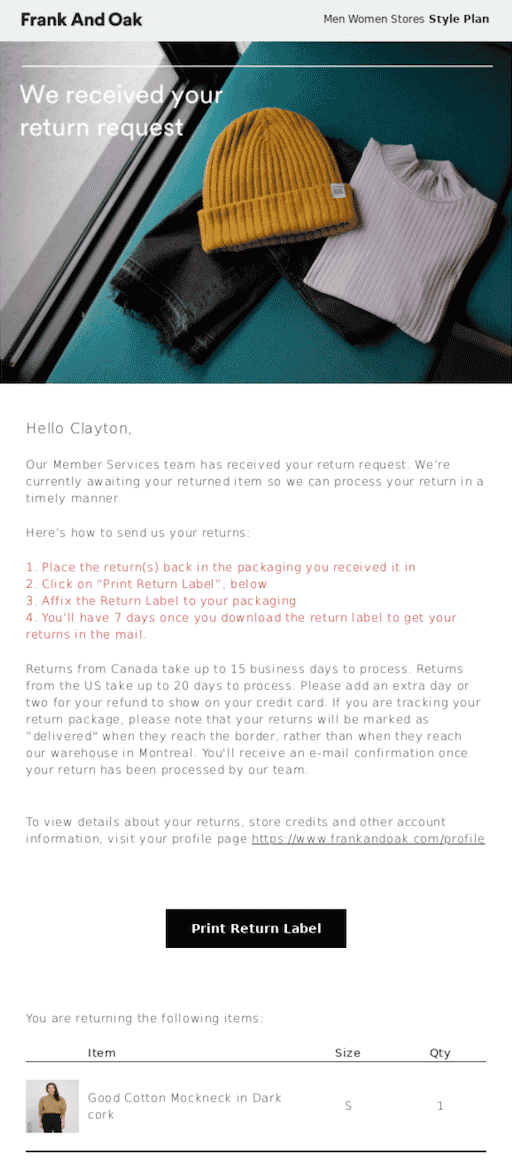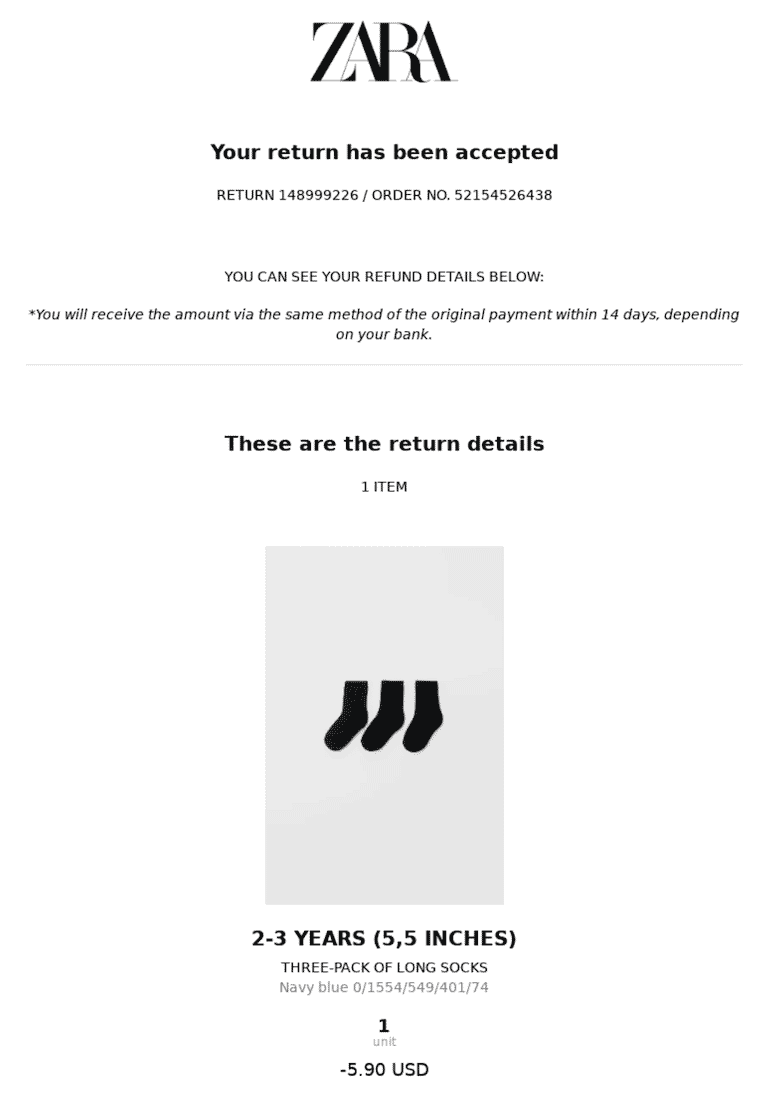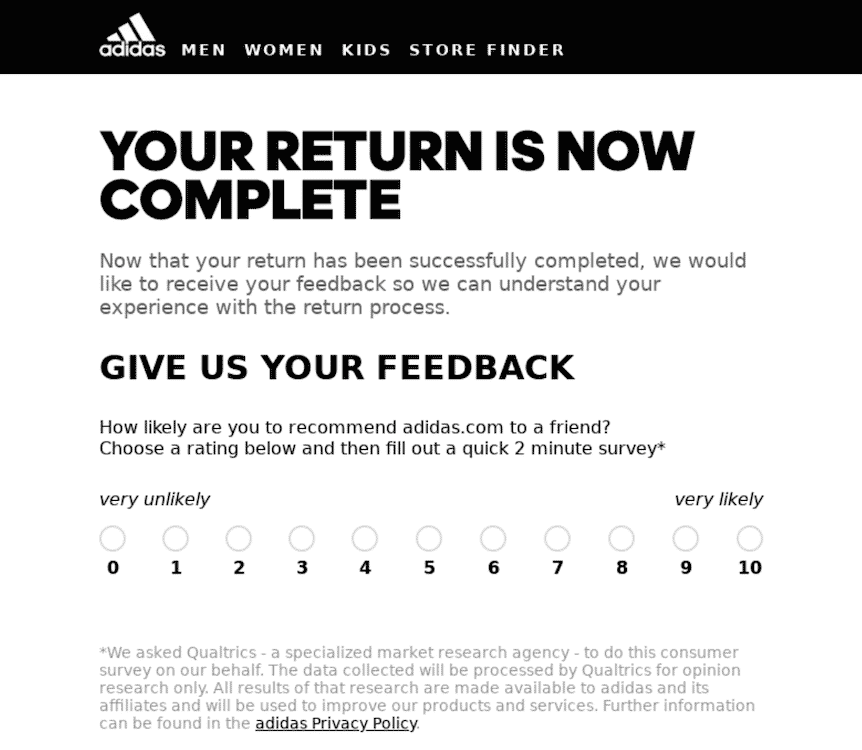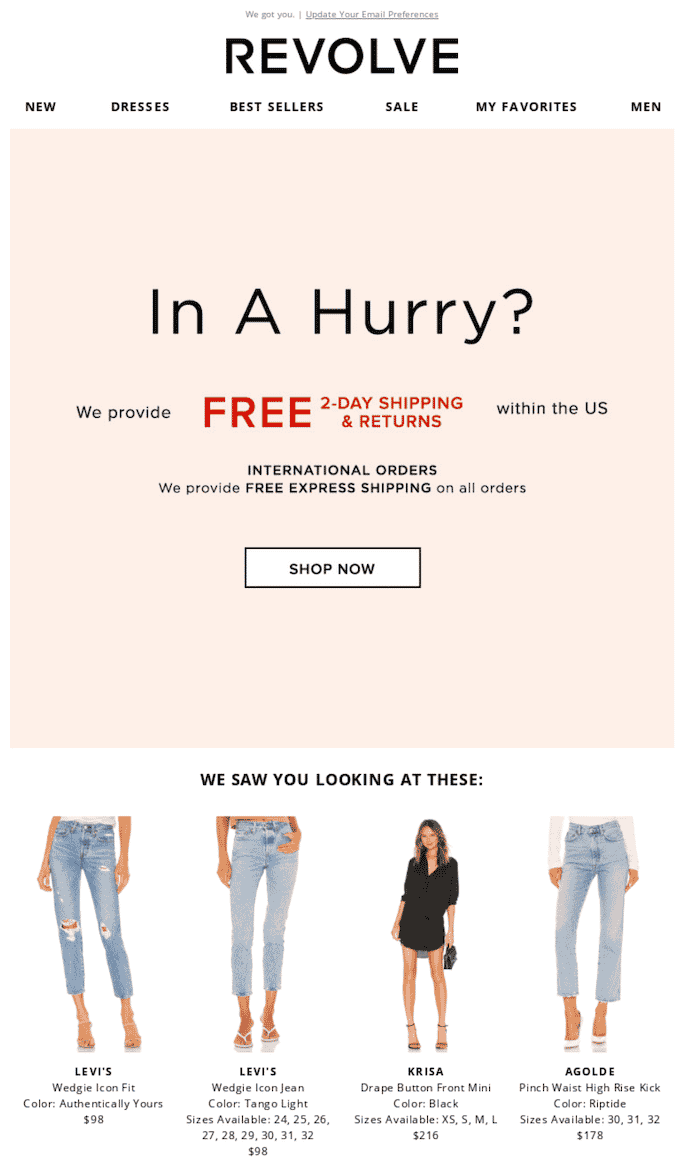Business
4 Ways to Build a Better Post‑Return Experience (and More Customer Loyalty)
December 6, 2021

‘Tis the season of online orders. And for any retail brand, that means an increase in the amount of returns requested and processed is waiting right around the corner. In fact, 30% of online orders are returned — a rate more than three times higher than your traditional in-store purchases.
With more retailers than ever facing an increased volume of returns and exchanges in their future, it’s no mystery why the post-return experience has become a critical component of any brand’s customer retention strategy. After all, 89% of consumers are less likely to shop with any company that can’t deliver a satisfying post-return experience.
Since the start of the COVID-19 pandemic, ecommerce-minded retail marketers everywhere have been making changes to streamline their post-return experiences. But whether you extend how many days someone has to return their merchandise or halting them altogether, there’s one important thing to keep in mind:
Often, your best customers are also your brand’s biggest returners.
Research shows that customers who process returns and engage with your post-return experience have a higher average order value (AOV), higher lifetime value (LTV), and make repeat purchases faster (and more often). Not to mention give you even more opportunities to interact on a one-to-one level and build more customer loyalty.
So, how can you build a better post-return experience that keeps buyers coming back for more? To get started, try any (or all) of the following four digital marketing tactics!
Nurture customer relationships with return request confirmation triggered emails
Whether you’re dealing with a first-time shopper or a long-time customer, it’s important that your post-return experience acknowledges customer satisfaction first and foremost. And one easy, effective way to do this is by segmenting your transactions to tailor messaging based on each individual buyer’s product preferences, purchase history, and more.
An email that personalizes the return process by including details like customer loyalty status, return/store credit available, or money saved this year, for example, can give someone extra motivation to make another purchase. Or, at the very least, show them that they mean more to your brand than a simple sales figure.

If it’s relevant to your return policy and in-line with your company’s values, you can even tap into current retail consumer sentiment to maximize loyalty and engagement by donating or recycling any returned items. That way, no customer has to feel guilty about unwanted products going to waste. Even better if your post-return experience enables shoppers to return items directly to their donation or recycling center of choice.
However you choose to add some excitement and creativity into your post-return experience, make sure your emails clearly explain any next steps for customers involved.
Because, done well, these interactions give you opportunities to collect even more data from your most loyal buyers — like gaining mobile phone numbers to deliver SMS updates, asking subscribers for real-time feedback on why an item didn’t meet their expectations, and more. All of which help your marketing efforts and personalization potential moving forward!
Enhance your post-return experience with return accepted and refund processing triggered messaging
In today’s ecommerce environment, transactions can happen in seconds. So, why should you expect customers to wait on their refunds — or any updates regarding their post-return experience status? As soon as you receive a returned item and a customer’s refund is submitted for processing, your brand should send an automated email letting shoppers know.

That way, you have every chance to nurture new customers and recapture revenue lost from loyal shoppers with win-back messaging or offers. If return data and disposition codes can be communicated to your email service provider (ESP), a triggered return accepted and refund processing email can even be tailored by audience segments such as:
- Incorrect product or size sent (may warrant a deeper make-good message after the fact)
- Product no longer needed
- Fit
- Quality
Something as small as a gift of store credit while a return is being processed or a special online discount code to be used on a future purchase can be a saving grace where your post-return experience (and building more customer loyalty) is concerned.
Tailor your email return triggers to customer satisfaction
While marketers have a million ways to measure the success of their post-return experience metrics, your most valuable source of information can only be obtained by going straight to your loyal customers.

So, anytime a shopper returns their online order, ask them for feedback and collect NPS data to enhance your future engagements. Click-based rules, personalized audience segmentation, and automated triggers based on customer satisfaction are all tools that can be used to make your make-good messaging even more effective.
Use your post-return experience to upsell
As mentioned earlier in this post, customers who make online returns also make repeat purchases faster and more frequently than the average shopper.

So, focus on shortening your Cash Conversion Cycle and increasing engagement and conversions to make your post-return experiences pop. Store credit burns a hole in customer pockets even more than their initial cash, so take advantage by introducing personalized products and your most popular sellers early to recapture as much lost loyalty and revenue as possible.
The State of Brand Loyalty in the U.S. in 2023
Related



